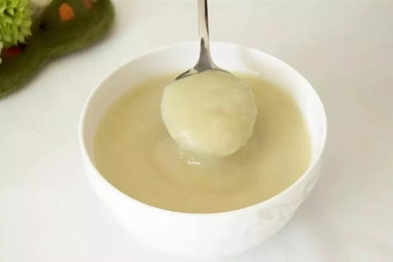More Than Just Powder: The Precise Science Behind baby food Production
For many babies, iron-fortified rice cereal is their first encounter with solid food. This simple, smooth powder represents a major nutritional milestone. But its simplicity is deceptive. The production of infant rice cereal is a highly controlled process where safety and nutrition are paramount. It involves transforming raw grains into a easily digestible, nutrient-dense, and perfectly safe first food. Let’s explore the sophisticated steps behind this process.
Step 1: The Raw Material: Sourcing and Selection
It all begins with the grain. While rice is the most common (due to its low allergy potential), oats, barley, and other grains are also used.
- Stringent Sourcing: Manufacturers source grains from certified suppliers who adhere to strict agricultural practices. This is the first critical control point for minimizing contaminants like heavy metals (e.g., arsenic, cadmium), pesticides, and mycotoxins.
- Quality Testing: Incoming grains are rigorously tested in labs for safety parameters, protein content, and purity before they are ever unloaded into the production facility.
Step 2: Cleaning and Dehulling
The selected grains undergo a thorough cleaning process to remove any physical impurities:
- They pass through vibrating screens to remove dust, stones, and other foreign materials.
- Magnets and metal detectors remove any metallic particles.
- For grains like oats, a dehulling process removes the inedible outer husk.
Step 3: The Core Process: Hydrothermal Treatment (Pre-Cooking)
This is the most crucial and distinctive step in infant cereal production. Unlike adult cereals, infant grains are pre-cooked and pre-digested for easy digestion.
- Steaming and Gelatinization: The cleaned grains are conditioned with steam under high pressure and temperature. This process, called gelatinization, breaks down the starch molecules, making them much easier for a baby’s immature digestive system to absorb.
- Enzyme Deactivation: The heat also deactivates natural enzymes in the grain that could cause spoilage and destroys any potential anti-nutrients (like phytate) that can interfere with mineral absorption.
Step 4: Drying and Milling
The pre-cooked, soft grains now contain a lot of moisture and must be dried.
- Drying: The grains are conveyed through a hot air dryer that reduces the moisture content to a very low level (typically below 3-5%). This ensures shelf stability and prevents microbial growth.
- Fine Milling: The dried, cooked grains are now extremely hard. They are ground into an ultra-fine powder using specialized impact mills or air classification mills. These mills can produce a powder so fine it feels silky to the touch, which is essential for creating a smooth, lump-free porarchy when mixed with water, milk, or formula.
Step 5: The Critical Step: Fortification
Native grains alone cannot provide the complete nutrition a growing infant needs. This is where scientific fortification comes in.
- Nutrient Premix: A precise blend of essential vitamins and minerals is prepared. This “premix” almost always includes:
- Iron: The most critical addition, as babies’ iron stores from birth deplete around 6 months.
- Zinc: Vital for immune function and growth.
- Calcium & Vitamin D: For bone development.
- B-Vitamins: Including B1 (Thiamine), important for energy metabolism.
- Blending: The vitamin and mineral premix is metered into the bulk cereal powder in a large, industrial mixer. This blending must be absolutely homogenous to ensure every single serving, from the top to the bottom of the box, contains the exact same nutritional profile.
Step 6: Packaging in a Controlled Environment
The finished product is highly sensitive to moisture and oxygen.
- Automated Packaging: The cereal powder is funneled into its final packaging—often a laminated foil pouch inside a cardboard box. This packaging is designed to be a strong barrier against moisture, air, and light, which can degrade the added vitamins.
- Nitrogen Flushing: To guarantee freshness and prevent oxidation, many manufacturers flush the pouches with inert nitrogen gas before sealing. This replaces the oxygen inside the package, dramatically extending the product’s shelf life and protecting its nutritional integrity.
Step 7: Quality Control: A Constant Vigilance
Quality control is integrated into every single step.
- HACCP Plans: The entire facility operates under a Hazard Analysis and Critical Control Points (HACCP) plan, identifying and controlling potential biological, chemical, and physical hazards.
- Final Testing: Samples from every production batch are tested for:
- Microbiological Safety: Ensuring the absence of Salmonella, E. coli, and other harmful bacteria.
- Nutrient Verification: Confirming the levels of fortified vitamins and minerals meet the stated label claims.
- Heavy Metals: Ongoing monitoring to ensure levels are as low as reasonably achievable.
Conclusion: Engineered for Nourishment
The production of infant rice cereal is a far cry from simply grinding rice into powder. It is a tightly controlled, scientific process of cooking, drying, and fortifying designed with one sole purpose: to provide a safe, nutritious, and easily digestible foundation for a baby’s first foods. It’s a product where food science directly serves the most vulnerable consumers, ensuring they get the best possible start in life.








